Abstract
Statement of problem
when using resin for class II restoration, micoleakage by instrumentation can be regarded as the primary negative characteristic. A review of the available literature suggests that using flowable resin as liner to decreased microleakage.
Purpose
The aim of this study was to determine the influence of the nanofilled flowable resin lining on marginal microleakage after load cycling in class II composite restoration fillings using nanofiller resin.
Material and methods
24 extracted premolars were prepared with class II cavity. F group was restored the nanofilled resin with the nanofilled flowable resin as liner. NF group was restored the nanofilled resin only. After restoration, an experiment was performed on 2 groups using a 300N load at 104, 105 and 106 cycles. Prior to and before each load cycling, it was gauged length on total marginal microleakage, axial marginal microleakage and buccal, gingival, lingual marginal microleakage. Data were analyzed with the Mann-Whitney test & Kruskal-Wallis test.
Go to : 
REFERENCES
1.Browning WD., Brackett WW., Gilpatrick RO. Two-year clinical comparison of a microfilled and a hybrid resin-based composite in non-carious Class V lesions. Oper Dent. 2000. 25:46–50.
2.Ward DH. Esthetic restoration of tooth structure using a nanofill composite system. Compend Contin Educ Dent. 2005. 26(252, 254):256–7.
3.Yap AU., Yap SH., Teo CK., Ng JJ. Comparison of surface finish of new aesthetic restorative materials. Oper Dent. 2004. 29:100–4.
4.Ritter AV. Direct resin-based composites: current recommendations for optimal clinical results. Compend Contin Educ Dent. 2005. 26:481–2. 484–90.
5.Holmes JR., Bayne SC., Holland GA., Sulik WD. Considerations in measurement of marginal fit. J Prosthet Dent. 1989. 62:405–8.

6.Huysmans MC., van der Varst PG., Lautenschlager EP., Monaghan P. The influence of simulated clinical handling on the flexural and compressive strength of posterior composite restorative materials. Dent Mater. 1996. 12:116–20.

7.Lindberg A., van Dijken JW., Ho ¨rstedt P. In vivo interfacial adaptation of class II resin composite restorations with and without a flowable resin composite liner. Clin Oral Investig. 2005. 9:77–83.
8.Jain P., Belcher M. Microleakage of Class II resin-based composite restorations with flowable composite in the proximal box. Am J Dent. 2000. 13:235–8.
9.Wibowo G., Stockton L. Microleakage of Class II composite restorations. Am J Dent. 2001. 14:177–85.
10.Belli S., Orucoglu H., Yildirim C., Eskitascioglu G. The effect of fiber placement or flowable resin lining on microleakage in Class II adhesive restorations. J Adhes Dent. 2007. 9:175–81.
11.Beznos C. Microleakage at the cervical margin of composite Class II cavities with different restorative techniques. Oper Dent. 2001. 26:60–9.
12.Lutz E., Krejci I., Oldenburg TR. Elimination of polymerization stresses at the margins of posterior composite resin restorations: a new restorative technique. Quintessence Int. 1986. 17:777–84.
13.Frankenberger R., Roth S., Kra ¨mer N., Pelka M., Petschelt A. Effect of preparation mode on Class II resin composite repair. J Oral Rehabil. 2003. 30:559–64.

Go to : 
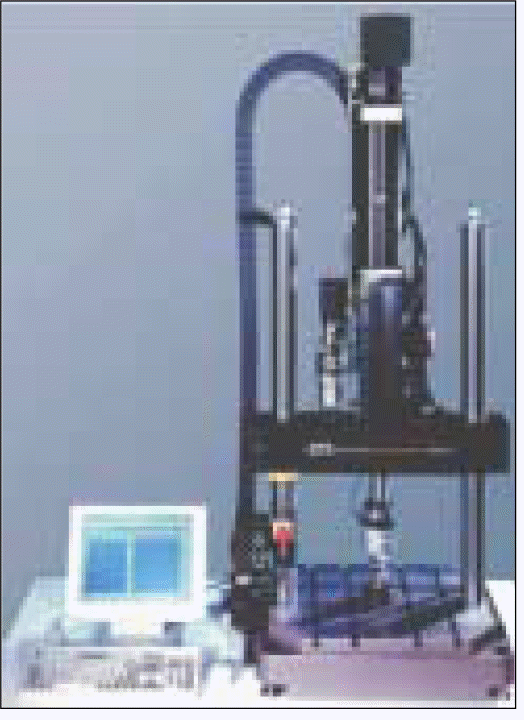 | Fig. 3.Instron 8871 Dynamic Material Testing Machine (Instron, UK) 8871: Axial-only. Maximum load capacities of ± 5 KN (± 1.1 Kip) and ± 10 KN (± 2.2 Kip). |
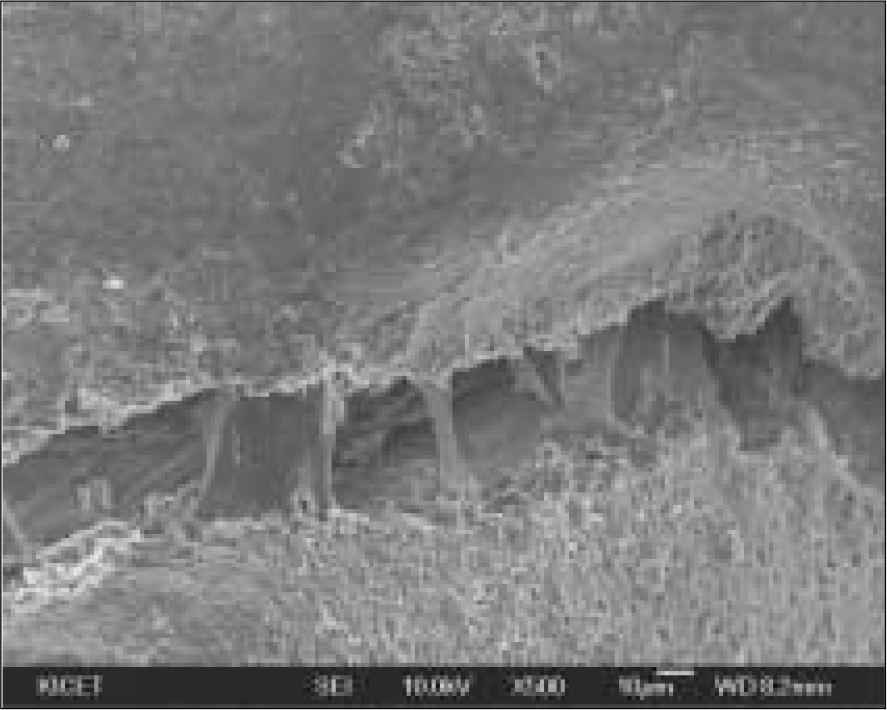 | Fig. 6.The scanning electron micron photograph shows a representative tooth surface with microleakage. |
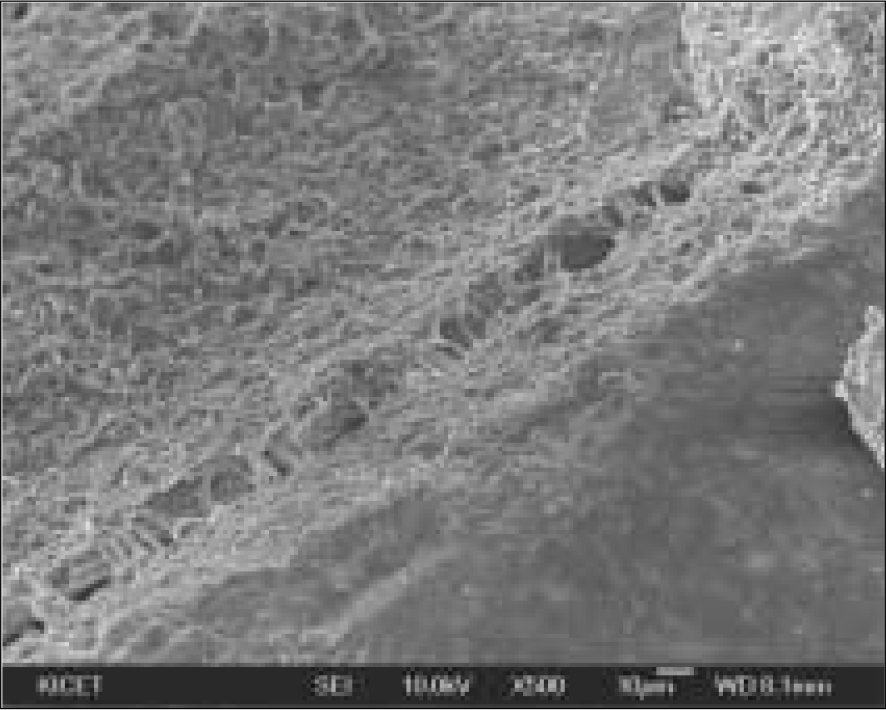 | Fig. 7.The scanning electron micron photograph shows a representative tooth surface without microleakage. |
Table I.
Percentage of microleakage length before load cycling (%)
| Before loading | g | B | G | L | A | T |
|---|---|---|---|---|---|---|
| Group F | F1 | 0 | 0 | 0 | 0 | 0 |
| F2 | 7.27 | 0 | 0 | 3.62 | 1.25 | |
| F3 | 0 | 0 | 3.12 | 1.3 | 0.75 | |
| Group NF | NF1 | 3.22 | 3.42 | 0 | 1.5 | 2.15 |
| NF2 | 4 | 13.4 | 6.27 | 5 | 8 | |
| NF3 | 0 | 11.9 | 7.1 | 3.25 | 6.77 |
Table II.
Percentage of microleakage length after load cycling (%)
| After loading | Cycle | B | G | L | A | T |
|---|---|---|---|---|---|---|
| Group F | F1 | 0 | 0 | 0 | 0 | 0 |
| F2 | 14.8 | 14.2 | 8 | 11.7 | 11.5 | |
| F3 | 17.1 | 42.7 | 13.3 | 15.6 | 27.4 | |
| Group NF | NF1 | 7.95 | 9.65 | 2.4 | 5.3 | 6.6 |
| NF2 | 15.9 | 62.7 | 29.7 | 21.9 | 38.2 | |
| NF3 | 20.4 | 82.8 | 49.6 | 36 | 64.2 |
Table III.
P values for difference about microleakage before loading
| Before loading | B | G | L | A | T |
|---|---|---|---|---|---|
| F | 0.405 | - | 0.405 | 0.530 | 0.590 |
| NF | 0.616 | 0.455 | 0.620 | 0.676 | 0.503 |




 PDF
PDF ePub
ePub Citation
Citation Print
Print


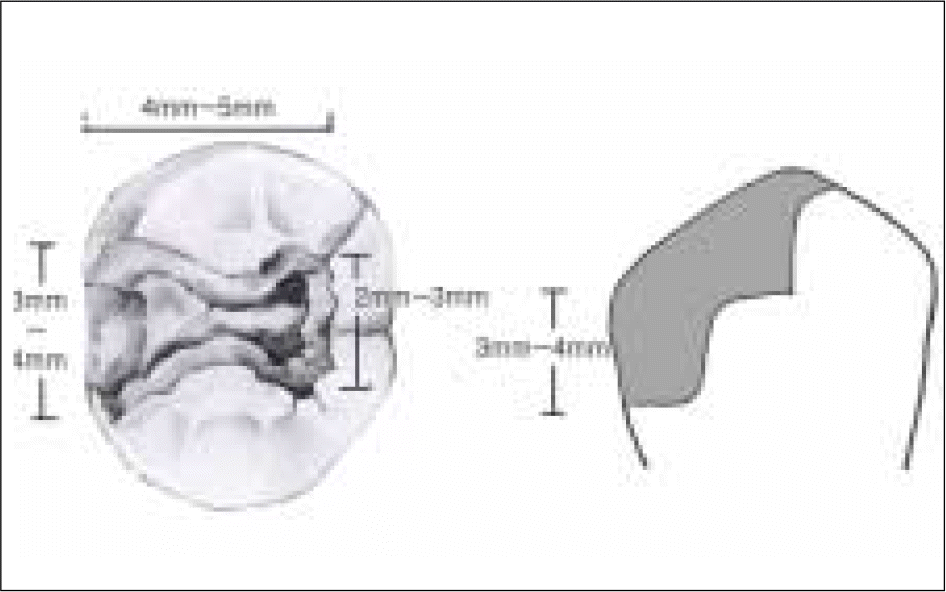
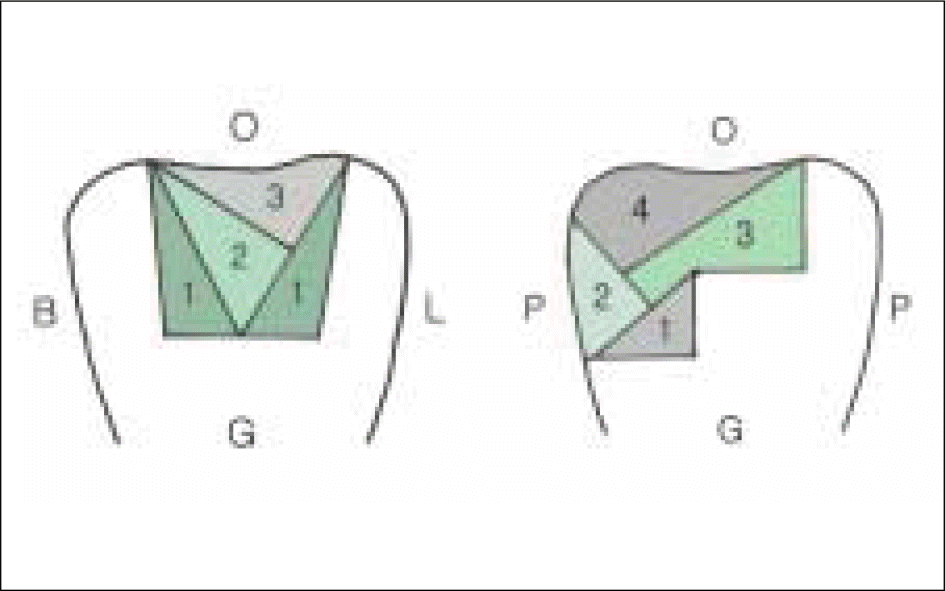
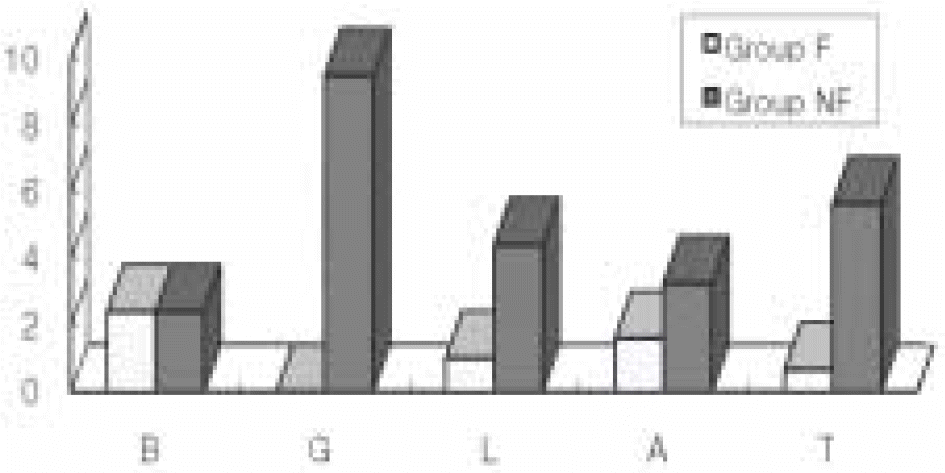
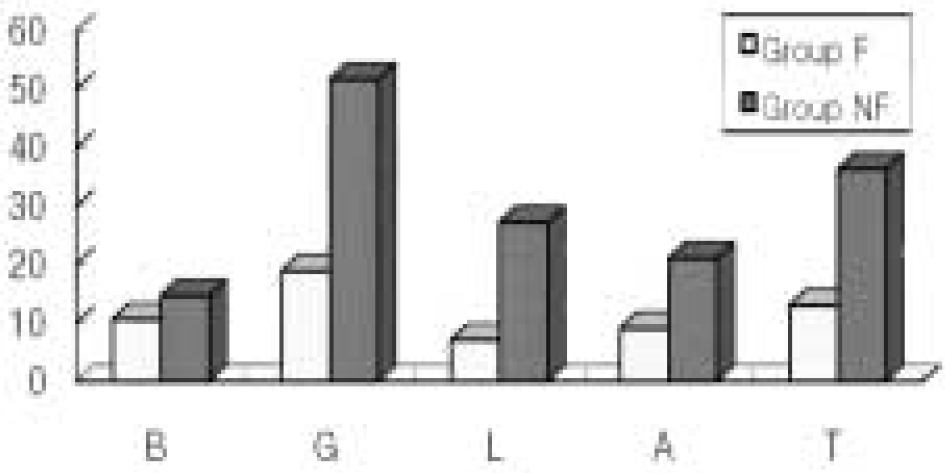
 XML Download
XML Download